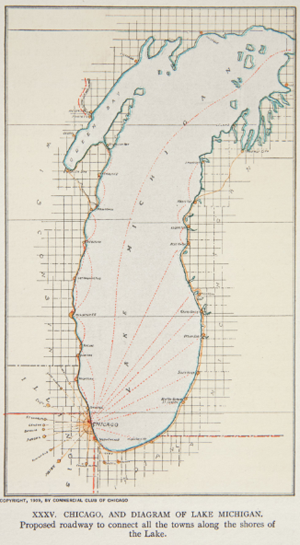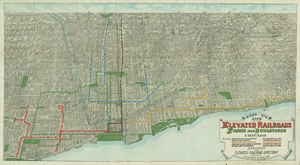 |
T A B L E O F C O N T E N T S
M A R C H / A P R I L 2 0 1 6
Volume 22, Number 3/4
DOI: 10.1045/march2016-contents
ISSN: 1082-9873
E D I T O R I A L
Grappling with Data
Editorial by Laurence Lannom, Corporation for National Research Initiatives
A R T I C L E S
Humanities Data in the Library: Integrity, Form, Access
Article by Thomas Padilla, Michigan State University
Abstract: Digitally inflected Humanities scholarship and pedagogy is on the rise. Librarians are engaging this activity in part through a range of digital scholarship initiatives. While these engagements bear value, efforts to reshape library collections in light of demand remain nascent. This paper advances principles derived from practice to inform development of collections that can better support data driven research and pedagogy, examines existing practice in this area for strengths and weaknesses, and extends to consider possible futures.
A New Approach to Configuration Management for Private LOCKSS Networks
Article by Tobin M. Cataldo, Birmingham Public Library, Birmingham, Alabama, USA
Abstract: The node-based configuration management model is an alternative approach to configuration management for Private LOCKSS Networks that reduces external dependencies and subsequent vulnerabilities by flattening the hierarchical vendor-consumer model into a preservation node-based service. The node-based configuration management model also describes approaches for leveraging the LOCKSS preservation protocols to distribute and preserve the configuration data, and maintain continuous service regardless of network membership changes or infrastructural failure.
RAMLET: a Conceptual Model for Resource Aggregation for Learning, Education, and Training
Article by Katrien Verbert, KU Leuven, Belgium; Nancy J. Hoebelheinrich, Knowledge Motifs, USA; Kerry Blinco, Northern Territory Library, Australia; Scott Lewis, Austin, Texas, USA; and Wilbert Kraan, University of Bolton, UK
Abstract: The Resource Aggregation Model for Learning, Education and Training (RAMLET) is a new IEEE standard, IEEE Std 1484.13.1™-2012, that has been developed to facilitate interoperability of existing standards for multimedia resource aggregations. Examples of such standards include METS and MPEG-21 Digital Item Declaration. These standards are used on a large scale for describing the structure of a collection of multimedia content. In addition, multiple structures can be specified to provide different paths through the same content. A limitation lies in the fact that they cannot interoperate. For instance, content structured in MPEG-21 cannot be reused in a METS context. This article presents different use cases in which the RAMLET standard enables interoperability of resource aggregation formats. We describe the RAMLET standard and mappings to other standards. In addition, we discuss lessons learned from the development process of this standard and future research challenges.
Harvesting and Repurposing Metadata from Web of Science to an Institutional Repository Using Web Services
Article by Yuan Li, Princeton University, USA
Abstract: This article describes the workflow used to ingest faculty publication citations into a Digital Commons platform Institutional Repository, by repurposing metadata harvested from the Web of Science using web services. This approach, along with a workflow, were developed to improve the populating process for the IR. Improving upon the previous manual process, this approach automates most of the collecting and ingesting process and greatly improves ingesting efficiency. A discussion of the benefits and limitations of the new approach is also provided.
Transforming User Knowledge into Archival Knowledge
Article by Tarvo Kärberg, University of Tartu and National Archives of Estonia and Koit Saarevet, National Archives of Estonia
Abstract: The users of archives have a vast body of knowledge about the records held in the archives. Some users have participated in the events, some have known the persons involved, some are experts in the subject matters. Their knowledge can cover important gaps that exist in archived knowledge. The objective of this paper is to explore methods to capture user knowledge and transform it to archival knowledge. We investigate the theory and describe the practical implementation developed at the National Archives of Estonia (NAE). In the theoretical part, we discuss the concept of knowledge and analyse its handling in the Open Archival Information System (OAIS) reference model. Having a clear focus on practical usability we identify a way to improve OAIS: complementing the model with a new link between Access and Data Management functional entities enables more efficient updating of descriptive information. Moving to practice, we describe the initial situation at the NAE, the needs, the approach taken and the solution — the new Archival Information System AIS 2.0. We explain key aspects of the system, including the use of 5-star Open Data in attaining the goal of knowledge transformation.
N E W S & E V E N T S
In Brief: Short Items of Current Awareness
In the News: Recent Press Releases and Announcements
Clips & Pointers: Documents, Deadlines, Calls for Participation
Meetings, Conferences, Workshops: Calendar of Activities Associated with Digital Libraries Research and Technologies
|
 |
F E A T U R E D D I G I T A L
C O L L E C T I O N


"Chicago, and Diagram of Lake Michigan. Proposed Roadway to Connect All the Towns along the Shores of the Lake," from Plan of Chicago (Chicago: The Commercial Club, 1909), pl. XXXV.
The Newberry Library, Case folio W 999 .182
[Courtesy Newberry Library. Used with permission.]

Birds-Eye View of the Elevated Railroads, Parks, and Boulevards of Chicago: Supplement to the Elevated Railroad Directory. Chicago: J.B. McComber, 1910. The Newberry Library.
MAP4F G4104.C6P34 1910 .M3
[Courtesy Newberry Library. Used with permission.]
Make Big Plans, Daniel Burnham's Vision of an American Metropolis is a digital resource from the Newberry Library that critically assesses the landmark Plan of Chicago and its place in the history of American urban planning and image-making. Published in 1909, the Plan continues to spark debate over how to organize urban landscapes. The Make Big Plans website sheds light on the contested nature of the Plan by exploring it as a document that harnessed not only the power of ideas but the allure of images to communicate its vision and ensure its influence.
With over 130 high-resolution images, as well as accompanying contextual essays, Make Big Plans is itself the product of ambitious planning, offering users an array of historical materials, from maps, views, and panoramas to photographs, postcards, and advertisements.The emphasis on images reflects Burnham's own approach to planning cities, which he saw primarily as an aesthetic endeavor.
This focus on aesthetics was one of the foundational principles of the City Beautiful movement, and it guided Burnham as he considered all sorts of issues, whether they were inherently aesthetic or not. For example, he regarded elevated train tracks as eye sores, and advocated moving them underground so that streets could offer unobstructed views of the Chicago skyline. According to Burnham, beauty and order might reverse the chaos of American cities, planned as they were on an ad hoc basis in deference to unbridled westward expansion and rapid industrialization. Burnham sought to bring European sophistication to the States; his greatest influence was Haussmann's redesign of Paris, with its serene parks and wide avenues and boulevards.
The images available on the Make Big Plans site were curated from the Newberry and other collections across the country, and illustrate the Western European and early American visions of urban design that preceded the Plan, in addition to those that emerged in its wake. The wide scope allows students, educators, and scholars to assess for themselves the influence of Burnham's legacy as well as its drawbacks and limitations.
D - L I B E D I T O R I A L S T A F F
Laurence Lannom, Editor-in-Chief
Allison Powell, Associate Editor
Catherine Rey, Managing Editor
Bonita Wilson, Contributing Editor
|